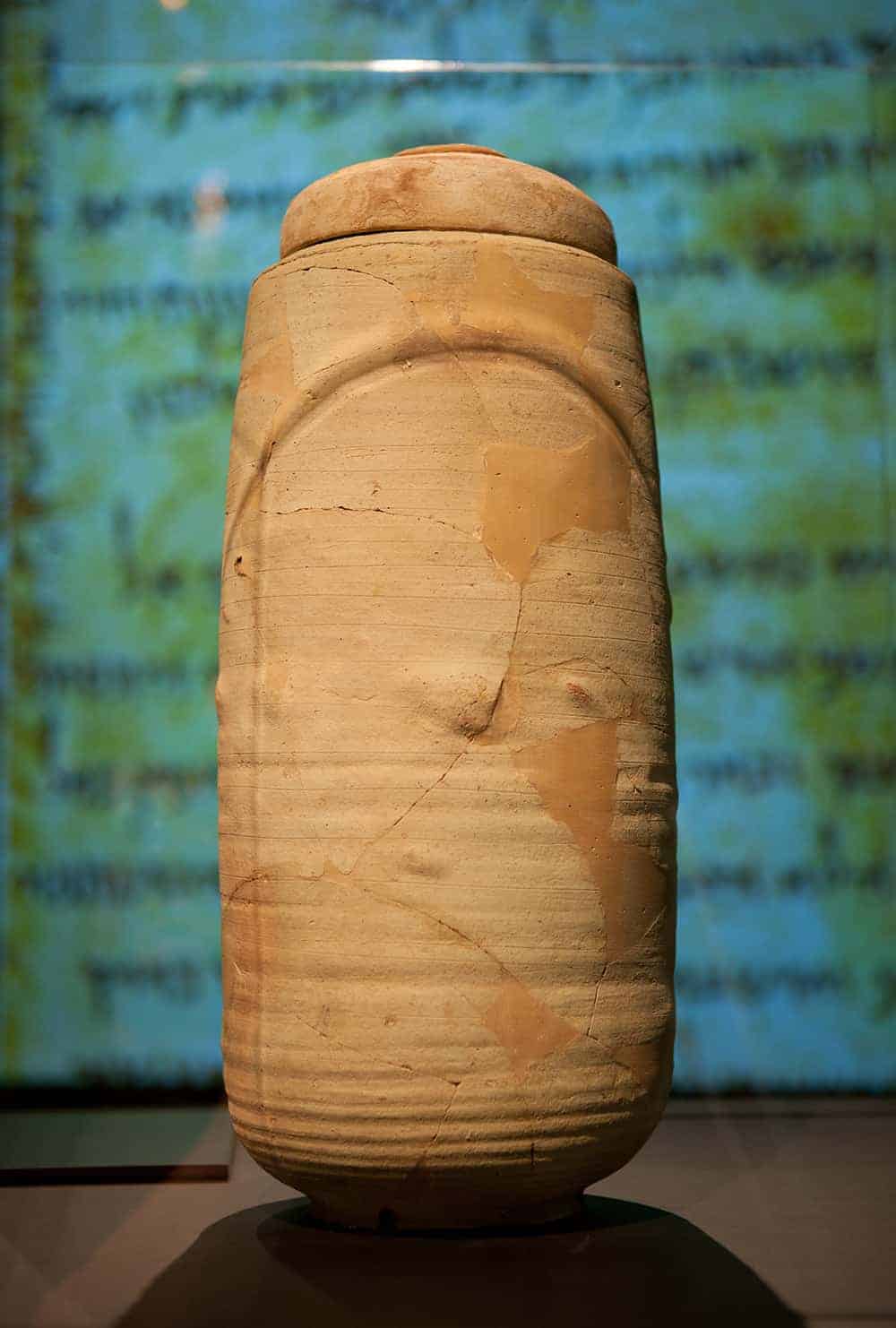One of the greatest archaeological discoveries of all time is coming to the Denver Museum of Nature and Science March 16, and it has deep roots in the Christian faith.
The Dead Sea Scrolls stand as a crucial link between the modern age and the Church’s roots in history. Many skeptics of religion, especially Christianity, scoff at the idea that the Bible and its books are not meant to be read as a fairy tale – in addition to being God’s divine word, they are historical documents. The discovery of the Dead Sea Scrolls reinforces this fact indisputably.
The scrolls were discovered almost by chance in the mid-1940s. An Arab shepherd searching for a lost sheep discovered a cave in the limestone cliffs on the northwestern shore of the Dead Sea, around the site of Qumran in Israel. His curiosity led him to cast a stone into the cave, and to his surprise, the sound of breaking pottery greeted him back. It’s not known if he ever found his lost sheep, but needless to say, he found something much greater.
The clay jars housed seven nearly intact ancient manuscripts which, it would be discovered later, were only part of the remains of over 900 manuscripts that scholars dated to have been written between 250 B.C. and 68 A.D.
Upon their initial discovery, three of the scrolls were sold to a Bethlehem antiquities dealer (one of which was a full manuscript of the Book of Isaiah), while the other four were sold to another antiquities dealer. When Hebrew University professor Eliezer Lipa Sukenik caught wind of the Scroll’s discovery through an Armenian antiquities dealer, he became intrigued and decided to investigate the significance of the finds himself.
He wrote of his reaction to opening the Scrolls for the first time and the revelation that these manuscripts were 1,000 years older than any existing Biblical text in his diary:
“My hands shook as I started to unwrap one of them. I read a few sentences. It was written in beautiful Biblical Hebrew. The language was like that of the Psalms, but the text was unknown to me. I looked and looked, and I suddenly had the feeling that I was privileged by destiny to gaze upon a Hebrew scroll which had not been read for more than 2,000 years.”

It took several years for scholars to authenticate the Scrolls, but once they were deemed authentic in the early 1950s, further excavations took place around the site of the initial discovery and 11 other caves containing more scrolls were discovered.
The history of how the Scrolls were discovered is a fascinating story in and of itself, but one that pales in comparison to the contents of the Scrolls. The majority of the Dead Sea Scrolls are religious works, divided by scholars into “Biblical” and “Non-Biblical” compositions.
Each of the manuscripts provide a fascinating glimpse into the ancient time period before Christ walked the earth and even during, but the perhaps the most striking of all the documents contained is the representation of the entirety of the Old Testament of Sacred Scripture (except for Esther) in the original Hebrew. Also present are translations of scriptural text into Aramaic and Greek, including the books of the Apocrypha, which are considered canonical in the Catholic and Eastern Orthodox Tradition but are not part of the Hebrew Bible.
The exhibit at the Denver Museum of Nature and Science will feature 10 of the scrolls on display at a time, and among those will be a portion of the Book of Isaiah and the Psalms.
Was it pure coincidence or divine intervention that led to the discovery of the Dead Sea Scrolls? Judge for yourself beginning March 16.
Dead Sea Scrolls
March 16 – Sept. 3
Tickets: dmns.org/dead-sea-scrolls




